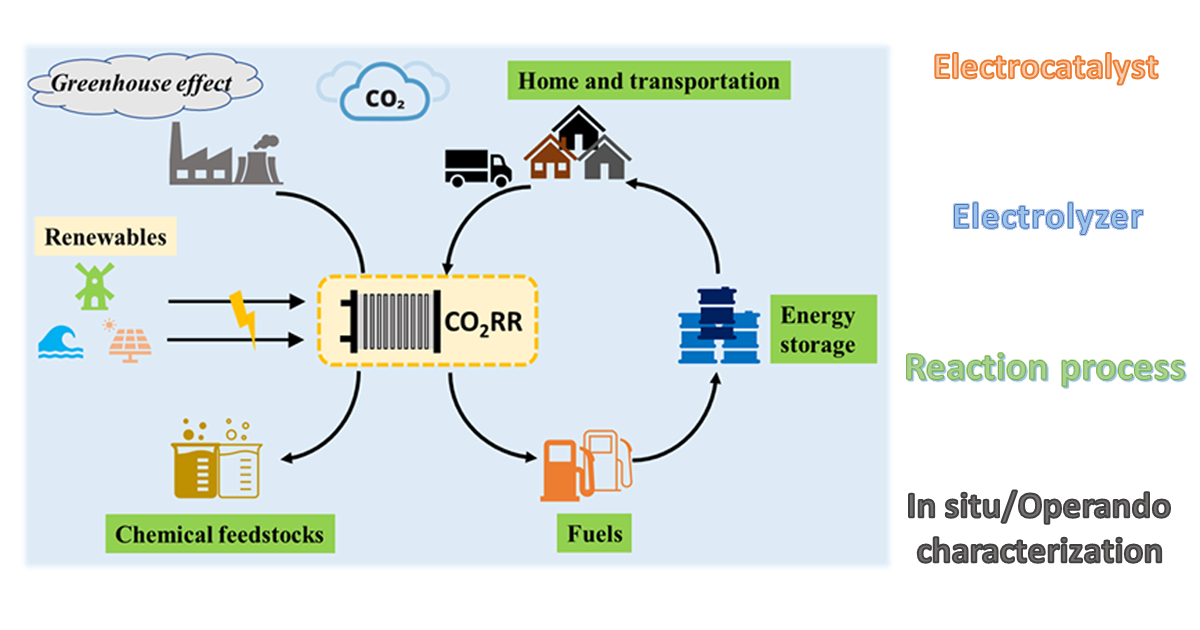- 2.8Impact Factor
- 5.5CiteScore
- 16 daysTime to First Decision
Advances in Electrochemical Catalysis for CO2 Reduction
This special issue belongs to the section “Chemical Processes and Systems“.
Special Issue Information
Dear Colleagues,
The utilization of CO2 is an effective strategy for mitigating the greenhouse effect through the production of valuable chemicals and fuels. The electrochemical CO2 reduction reaction (CO2RR) is considered a promising technology for reducing CO2 emissions and achieving sustainable carbon neutrality. However, the practical application and commercialization of CO2RR face significant challenges, including high overpotential, sluggish kinetics, a broad distribution of target products, competitive hydrogen evolution reaction (HER) in aqueous media, and the requirement of multi-electron transfer steps for most catalysts during CO2RR. Therefore, it is essential to develop highly selective and active electrocatalysts to improve CO2RR performance.
In recent years, a variety of approaches have been developed to address the challenges of CO2RR. These include employing engineering strategies in electrocatalyst design to enhance electrocatalytic activity and selectivity, using flow electrolyzer or membrane electrode assembly electrolyzer to boost electrochemical performance, and advancing operando/in situ characterization techniques for a deeper understanding of the reaction mechanisms.
This Special Issue, entitled “Advances in Electrochemical Catalysis for CO2 Reduction,” aims to provide a platform for highlighting the recent advances in this field. Potential topics include, but are not limited to, the following:
- Advances in electrocatalyst design;
- The development of CO2RR devices;
- Operando/in situ characterization techniques;
- The investigation of dynamic reaction processes for understanding reaction mechanisms.
Dr. Pengfei Sui
Guest Editor
Manuscript Submission Information
Manuscripts should be submitted online at www.mdpi.com by registering and logging in to this website. Once you are registered, click here to go to the submission form. Manuscripts can be submitted until the deadline. All submissions that pass pre-check are peer-reviewed. Accepted papers will be published continuously in the journal (as soon as accepted) and will be listed together on the special issue website. Research articles, review articles as well as short communications are invited. For planned papers, a title and short abstract (about 250 words) can be sent to the Editorial Office for assessment.
Submitted manuscripts should not have been published previously, nor be under consideration for publication elsewhere (except conference proceedings papers). All manuscripts are thoroughly refereed through a single-blind peer-review process. A guide for authors and other relevant information for submission of manuscripts is available on the Instructions for Authors page. Processes is an international peer-reviewed open access semimonthly journal published by MDPI.
Please visit the Instructions for Authors page before submitting a manuscript. The Article Processing Charge (APC) for publication in this open access journal is 2400 CHF (Swiss Francs). Submitted papers should be well formatted and use good English. Authors may use MDPI's English editing service prior to publication or during author revisions.
Keywords
- CO2 electroreduction
- electrocatalysis
- device design
- In situ characterizations
- nanomaterials
- reaction mechanism

Benefits of Publishing in a Special Issue
- Ease of navigation: Grouping papers by topic helps scholars navigate broad scope journals more efficiently.
- Greater discoverability: Special Issues support the reach and impact of scientific research. Articles in Special Issues are more discoverable and cited more frequently.
- Expansion of research network: Special Issues facilitate connections among authors, fostering scientific collaborations.
- External promotion: Articles in Special Issues are often promoted through the journal's social media, increasing their visibility.
- e-Book format: Special Issues with more than 10 articles can be published as dedicated e-books, ensuring wide and rapid dissemination.

